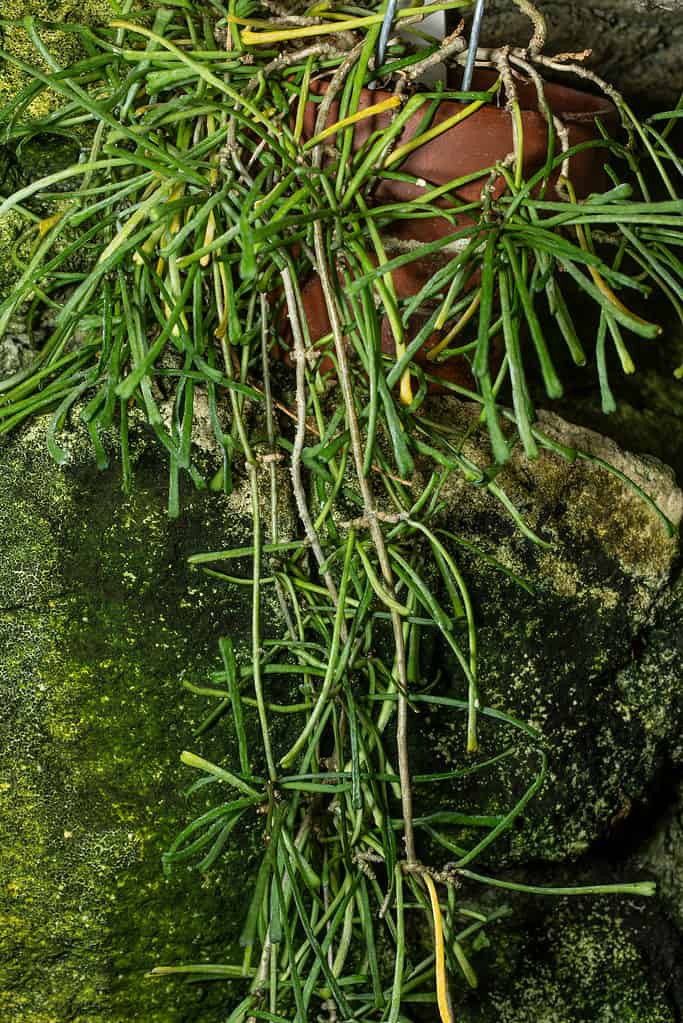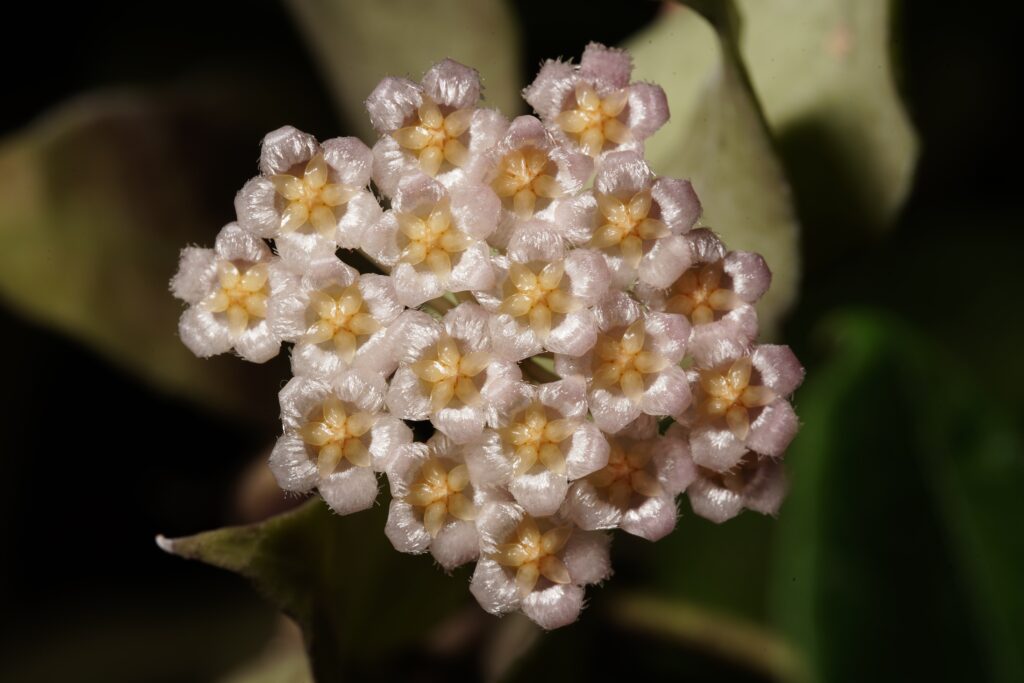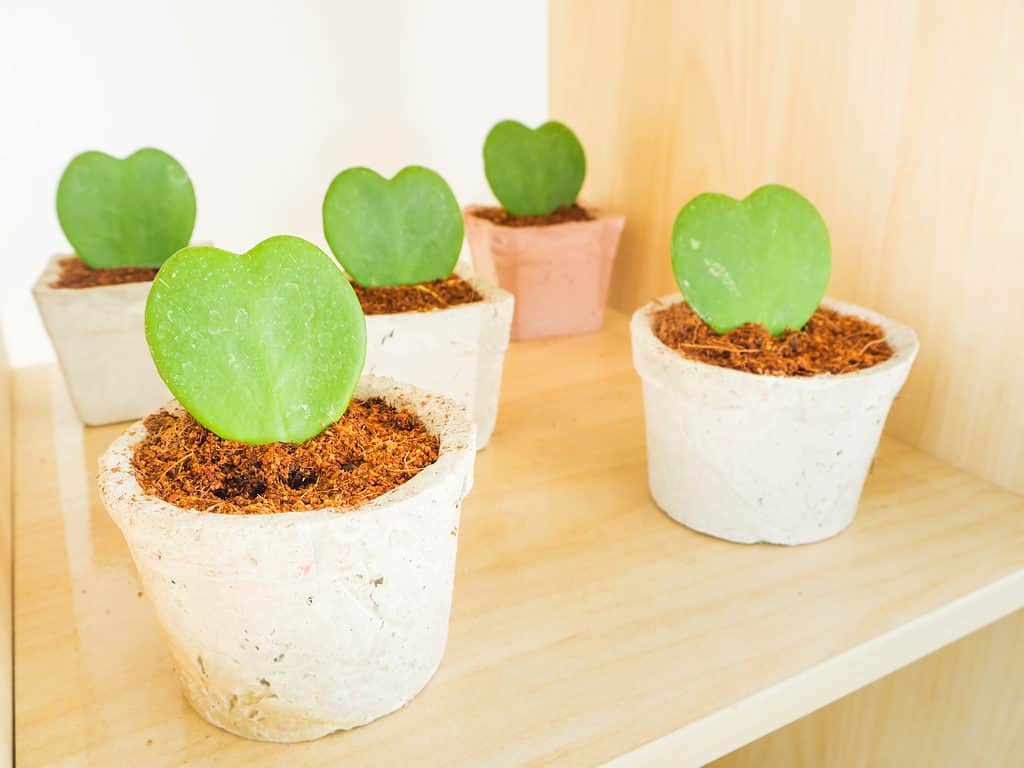Hoya plants are lovely, unique plants, prized for their stunning flowers and eye-catching foliage. They are native to tropical regions but can successfully grow in other areas. Many people keep their hoya plants indoors in hanging pots. However, you can also grow hoya plants outdoors. Most species are winter hardy in Zones 10 and 11. But if you live in a colder climate, don’t despair! It is entirely possible to grow your hoya in an outdoor container and bring it indoors during the colder months. And while maintaining outdoor hoya plants can pose some challenges, it is also rewarding. So to help you get started, we gathered information on how to grow an outdoor hoya plant. Keep reading to learn more!
Finding the Right Location for Hoya Plants
As with many other plants, hoyas are rather particular about their environment. That means you should consider a few factors before deciding on a location for your hoya plant. Here are some things to think about:
Climate
These stunning tropical plants require specific heat and humidity levels. That is definitely easy to achieve in some areas but not necessarily in others. Hoya plants thrive in 60 to 80 (F) degree weather. You have selected the right location as long as you can offer them a warm home with decent humidity.
However, if you live in a colder environment, make sure you have a spot picked out inside for the winter. Additionally, growing a hoya plant outdoors isn’t impossible if you live in a drier climate. It may just take a little more effort to find the ideal space.
Sunlight
Try to find a spot that receives at least 6 hours of quality light every day. Most hoya species require bright, indirect sunlight. However, a few can handle brief, periodic stints of direct sunlight. When a hoya plant gets too much sunlight, its leaves can burn. And you don’t want to damage the stunning foliage!
That does not mean your sunny patio is necessarily off-limits for your hoya plant. But it will require extra consideration about how you can create some shade for your sensitive plant.
Pest and Disease Protection
Thankfully, there are not many pests or diseases that plague hoya plants. That said… Keeping a hoya plant outdoors will increase the chance of pest issues. Common pests to worry about include mealybugs and spider mites.
As far as diseases go, the most common problem is root rot. It occurs when the soil has stayed too saturated for too long. So proper watering is important.
Soil and Water Needs
The soil and water requirements for hoya plants will not differ too much between indoor and outdoor plants. We will go into a more detailed explanation of caring for hoya plants below. But the one critical point to note here is that you should pay closer attention to the soil’s moisture level with outdoor plants. Wind, drier-than-intended air, and other environmental factors may cause the soil to dry out sooner. It is best to check every few days during the growing season.

The gorgeous trailing vines that hoya plants are known for (like on this
Hoya retusa)make them a great option for outdoor display.
©K Hanley CHDPhoto/Shutterstock.com
Choosing the Right Hoya to Grow Outdoors
Every hoya species has fascinating and unique characteristics. And all would be a great choice! However, not all are ideal for outdoor environments. Here are some factors to think about before you choose an outdoor plant.
Sunlight Needs
As discussed above, some hoya varieties do well with some direct sunlight. In fact, sunrise hoyas offer a little surprise when exposed to small amounts of direct light. Their foliage and flowers change shades! That’s a nice treat and something to consider.
Vine Length
One of the reasons hoyas are so popular is their long, trailing vines. They look gorgeous sprawled over the edges of hanging baskets or climbing a trellis or bamboo pole. However, not all hoya vines are created equal. Some only grow to reach a few feet, while others get much longer. Consider what kind of display or aesthetic you hope to accomplish with your hoya vines before deciding on one.
Caring for Outdoor Hoya Plants
After selecting the ideal outdoor location for your hoya plant (or plants if you choose to propagate), it’s time to keep it happy. Thankfully, most hoya plants are relatively easy to care for. So following the steps below will help your plant thrive!
Watering
Hoya plants don’t require a tremendous amount of water. During the winter (dormant) months, you can wait until the soil dries out before watering. But during the summer, you will want to water more often. Once the top two inches of soil dries out, feel free to water your hoya. Only add enough water to make the soil damp but not saturated.
Fertilization
Regular fertilization will help your plant develop the best possible foliage and leaves. Use a balanced, water-soluble fertilizer throughout the growing season. A good rule of thumb is roughly every two to four weeks.
Soil
Plant your hoya in loose, well-draining soil. Avoid any areas or soil mixes with clay. A good soil option is a mix designed for cacti and succulents, as it is more porous and will allow the water to drain properly. This step is vital because when the soil gets (or remains) too damp, it may result in root rot.
Pruning
Since hoya plants grow exponentially and develop long, lovely vines, you will want to prune them back occasionally. The best time to do so is early spring before the flower buds form. Take care to avoid pruning any areas that held blossoms the year prior. Hoya flowers return to the same spot every year.
Addressing Common Issues
Hoya plants can suffer from issues like pests, leaf drop, and root rot. If pests appear, treat your plant with neem oil or an insecticidal soap promptly to prevent spread. The remedy for leaf drop is ensuring adequate indirect sunlight and avoiding overwatering. The latter will also contribute to root rot. So be sure to let the soil dry out properly before watering.

Sunrise hoya flowers and foliage change color when exposed to some direct sunlight, so they may be the right choice for your outdoor hoya!
©Amarisa M/Shutterstock.com
Propagating Hoya Plants
Of course, after you start growing your first hoya plant outdoors, the chances are high that you will want more! Thankfully, hoya plants are easy to propagate. Below are a few options.
Stem Cuttings
A common propagation method is using stem cuttings. All you need to do is cut a piece from the parent plant. It can go into fresh soil or in a glass of water. Once the root system begins growing, the cutting is ready for its new pot!
Leaf Cuttings
Another way to propagate your precious hoya plant is to take a leaf cutting. After removing a healthy leaf from the parent plant, you will root it into the soil. This method is a popular one for the distinctive sweetheart hoya. However, keep in mind that it is not as successful as stem cuttings.
Layering
This simple propagation method forgoes any cuttings. You will simply take a hoya stem and gently bend it into a new pot of soil (placed next to your current plant). After anchoring the stem to the soil, water it whenever you water your plant. It will start to develop a root system, at which point you can cut it away from the parent plant.

The leaf propagation method is popular for the lovely sweetheart hoya plants.
©Supachita Krerkkaiwan/Shutterstock.com
The photo featured at the top of this post is © Nick Pecker/Shutterstock.com
Thank you for reading! Have some feedback for us? Contact the AZ Animals editorial team.






